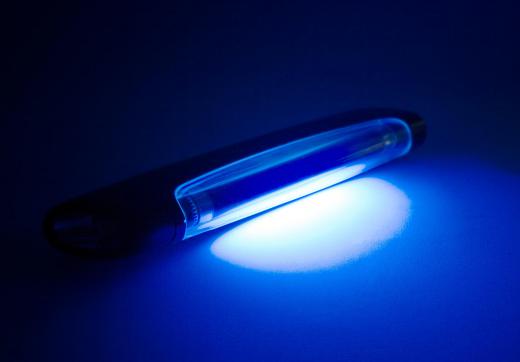What is Light?
Light refers to a small band of frequencies visible to the human eye among the larger electromagnetic (EM) radiation scale. Most EM waves oscillate at a rate that humans are unable to detect visually. This might be compared with a dog whistle with a pitch that human ears cannot hear. In the same way, some animals can see EM frequencies that humans cannot. Bees, for example, see in the ultra-violet (UV) range to pick out patterns in flowers only visible with UV-equipped vision.
EM radiation is an electric field with magnetic properties that propagate from one point to another, or radiate outward. EM radiation is a wave with frequency and amplitude. Frequency refers to how many waves pass a stationary point per second, while amplitude measures the height of a wave. Visible light has a wavelength of 400 to 700 nanometers. To put this in perspective, a nanometer is one billionth of a meter (one billionth of 3.281 feet).

Light has different properties depending on its amplitude and wavelength. Longer waves, or lower frequencies, result in red light, while shorter waves, or higher frequencies, result in blue. Red is at one extreme end of the visible spectrum, while blue or violet light is at the other. Just beyond the blue/violet spectrum are ultra-short waves called ultra-violet. This just-visible and near-visible light is also called High Energy Ultra Violet (HEV) light.

At the extreme end of the blue spectrum, most of the radiation becomes invisible, resulting in dim violet light, also called black light. This wavelength has interesting properties in that certain pigments absorb the extra radiation that cannot be seen, causing these pigments to re-radiate the energy and glow. One example is a black light poster. Slightly shorter wavelengths produce black light used in criminal forensics to fluoresce body fluids such as urine and blood. Beyond UV radiation on the EM scale are x-rays and gamma rays. Cosmic rays, when included, fall here; though many scientists believe cosmic rays do not technically belong in the EM spectrum.

The opposite end of the visible spectrum goes beyond red to infrared. Infra is Latin for “below,” so infrared literally means "below red." Infrared light is used for night vision cameras and thermal imaging. In this wavelength, warm objects appear brighter than cold objects. Infrared is also used for short-range networking of computer peripherals with the Infrared Data Association (IrDA) specification. As wavelengths continue to grow longer, we reach microwaves, followed by radio waves, and finally, the broadcast spectrum.
Though light is often described as a wave, it has a dual nature according to quantum physics. Physics describes light as photons, or massless energy particles that can at times behave like a wave. Whether wave, particle, or vibrating “string,” as superstring theory suggests, in a vacuum all EM radiation moves at a constant speed of 186,282 miles per second, or 299,792,458 meters per second. A light year is therefore the distance that light can travel in a year. The nearest star, Alpha Centauri, is four light years away.
AS FEATURED ON:
AS FEATURED ON:













Discussion Comments
@DylanB – That's an interesting take on light! I tend to be rather literal minded, so only physical things come to my mind when I think of light.
One light that always fills me with dread is the check engine light. I have a car that is seven years old, and this light has come on many times over the years.
Sometimes, it requires a very expensive fix, but other times, it's just a glitch in the computer. I always worry when I see it that I might not make it to a shop before I break down, though!
Light can be anything that helps you see. It could come in the form of a revelation or a comment that opens up your eyes to something that you could not see before, even though it was right in front of you.
My friend was a source of light to me in a dark time. He gave me a new way of looking at life by shining new perspectives in my direction.
In my opinion, moonlight is the best source of outdoor light a person can have in their yard. Many people pollute the darkness by filling it with harsh artificial street lights, but pure moonlight is bright enough for you to see nearly as much as you could with street lights.
Also, if you don't have any outdoor lights in your yard, you can see the stars so much better. I live out in the country, and I have a spectacular view of the moon and stars. I wouldn't dream of messing that up with some sort of light bulb.
I had a black light bulb that I would periodically use in place of my ceiling fan light, which was a normal incandescent bulb. I would use the black light whenever I wanted to change up the atmosphere in my room.
It wasn't good for times when I needed to read or see details, but when I felt reflective or wanted to listen to music and create a cool mood, it was awesome. My walls were painted white, so they glowed a little in its rays.
I also had several black light reactive posters that would glow eerily in the room. I even had some black light reactive lipstick and nail polish.
@elama: Light has no mass. It is a pressure wave in normal space.
if light has no particle mass however small then there can be no friction. Without friction, no heat; no heat, no light; no light, no spectrum; no spectrum, no em waves, and so forth and so on. my hypothesis is only theory but it is taken in great part form Einstein's theories of light and atomic theory and their relationship to each other.
Post your comments